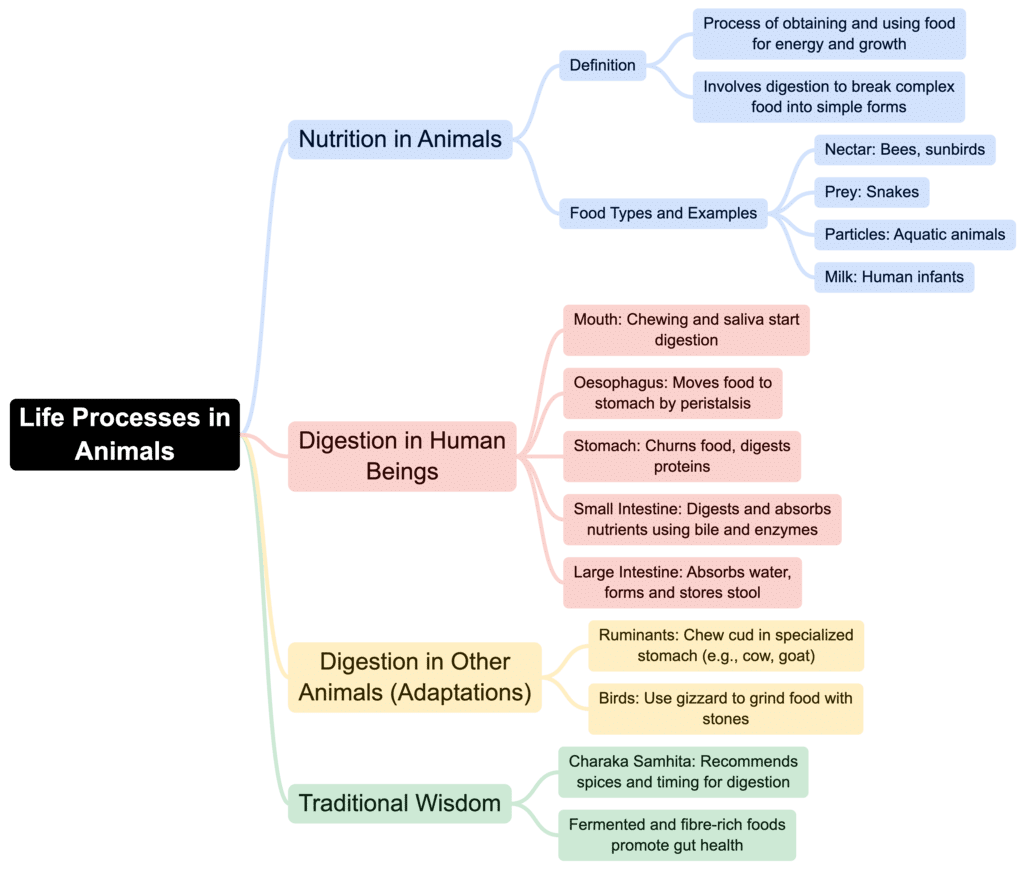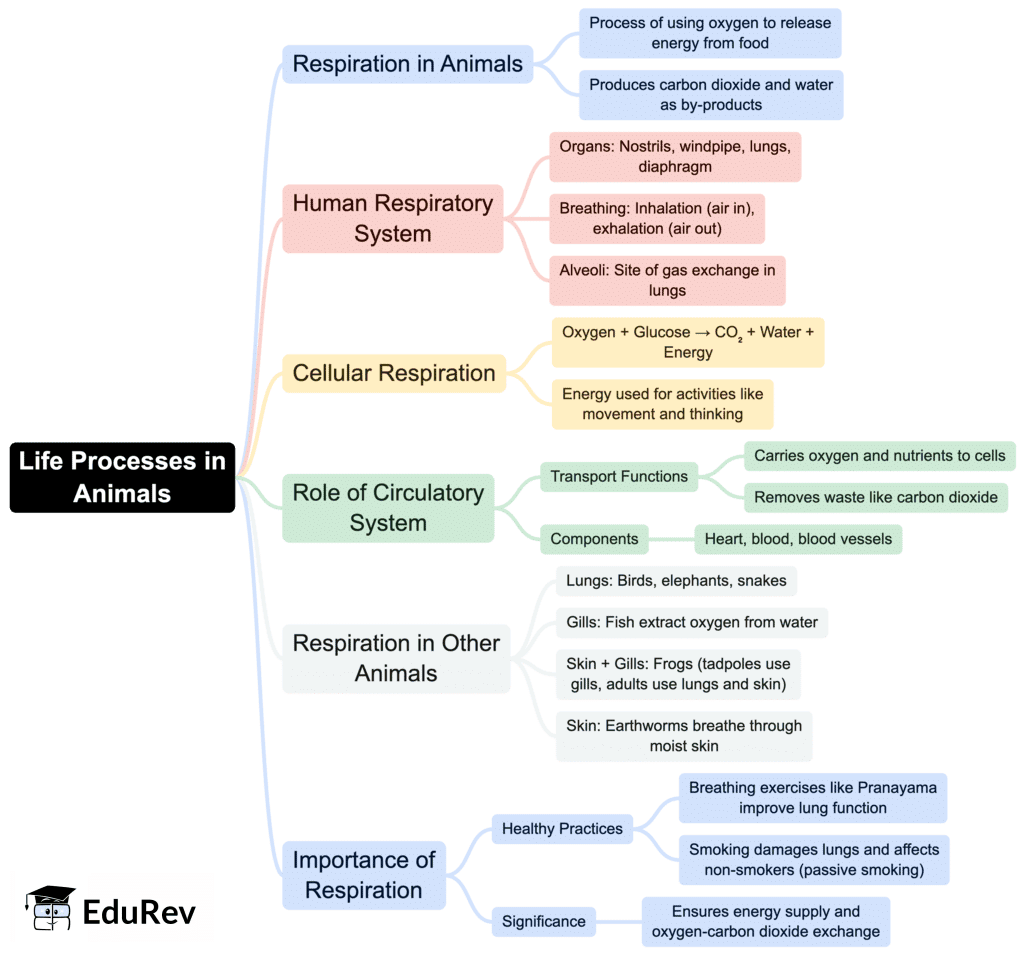Class 7 Exam > Class 7 Notes > Science Olympiad Class 7 > Mind Map: Life Processes in Animals
Class 7 Science Chapter 9 Mindmap - Life Processes in Animals


The document Class 7 Science Chapter 9 Mindmap - Life Processes in Animals is a part of the Class 7 Course Science Olympiad Class 7.
All you need of Class 7 at this link: Class 7
|
49 videos|125 docs|45 tests
|
FAQs on Class 7 Science Chapter 9 Mindmap - Life Processes in Animals
| 1. What are the main life processes in animals? |  |
Ans. The main life processes in animals include nutrition, respiration, circulation, excretion, movement, and reproduction. These processes are essential for the survival of the organism and help in maintaining homeostasis.
| 2. How do animals obtain their nutrition? |  |
Ans. Animals obtain nutrition through various means, primarily by consuming other organisms. They can be classified as herbivores (plant-eaters), carnivores (meat-eaters), or omnivores (both plant and meat-eaters). The digestive system then breaks down food into nutrients that the body can use.
| 3. What role does respiration play in animal life processes? |  |
Ans. Respiration is the process through which animals take in oxygen and expel carbon dioxide. It is crucial because it helps release energy from food, which is necessary for various bodily functions. Different animals have different respiratory systems, such as gills in fish and lungs in mammals.
| 4. Why is circulation important in animals? |  |
Ans. Circulation is important as it involves the movement of blood and lymph throughout the body. This process helps transport nutrients, oxygen, hormones, and waste products to and from cells. A well-functioning circulatory system is vital for maintaining healthy body functions.
| 5. How do animals reproduce? |  |
Ans. Animals reproduce either sexually or asexually. Sexual reproduction involves the combination of genetic material from two parents, leading to offspring with genetic variation. Asexual reproduction, on the other hand, involves a single organism producing offspring identical to itself, such as in the case of budding or fission.
Related Searches

















